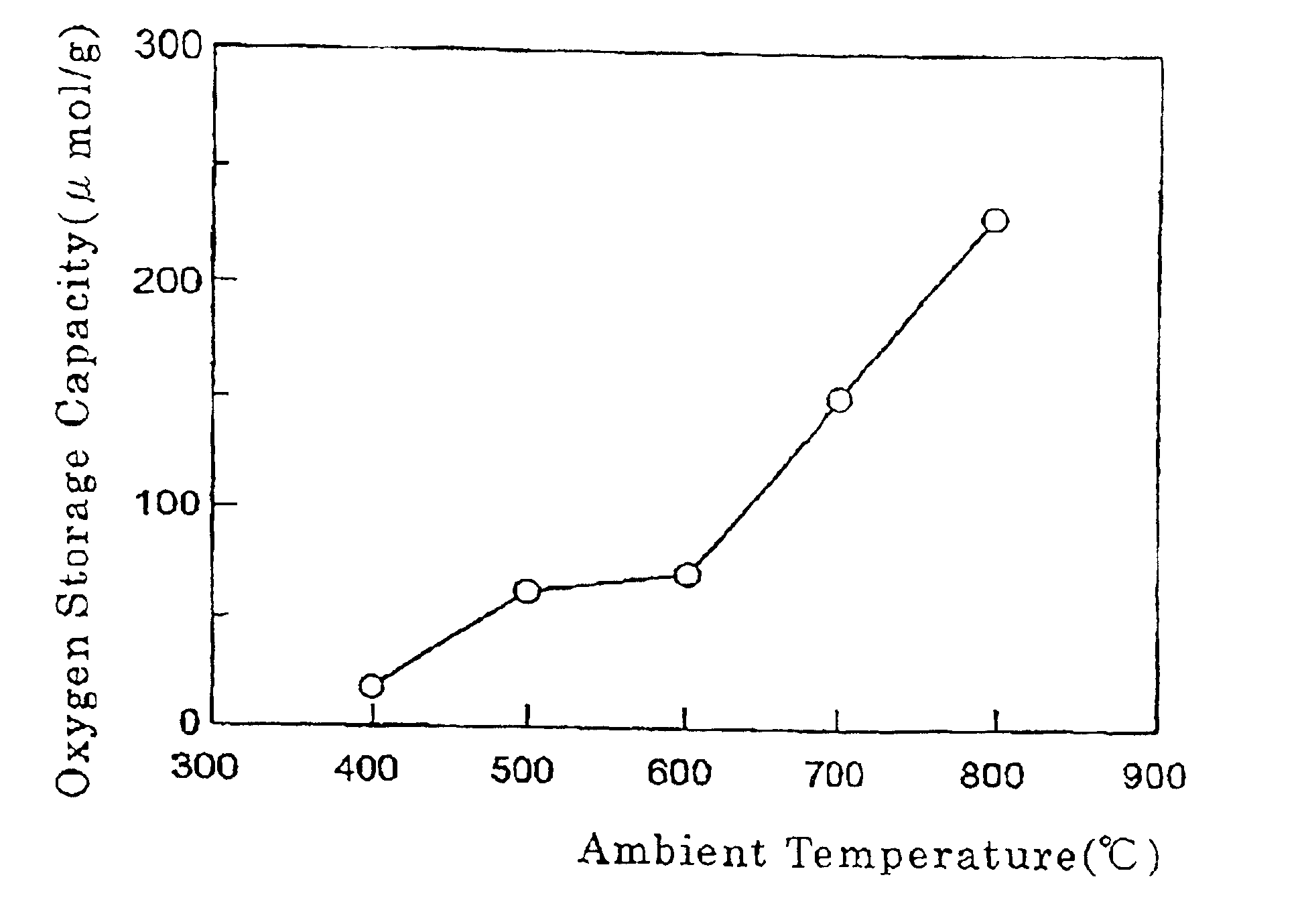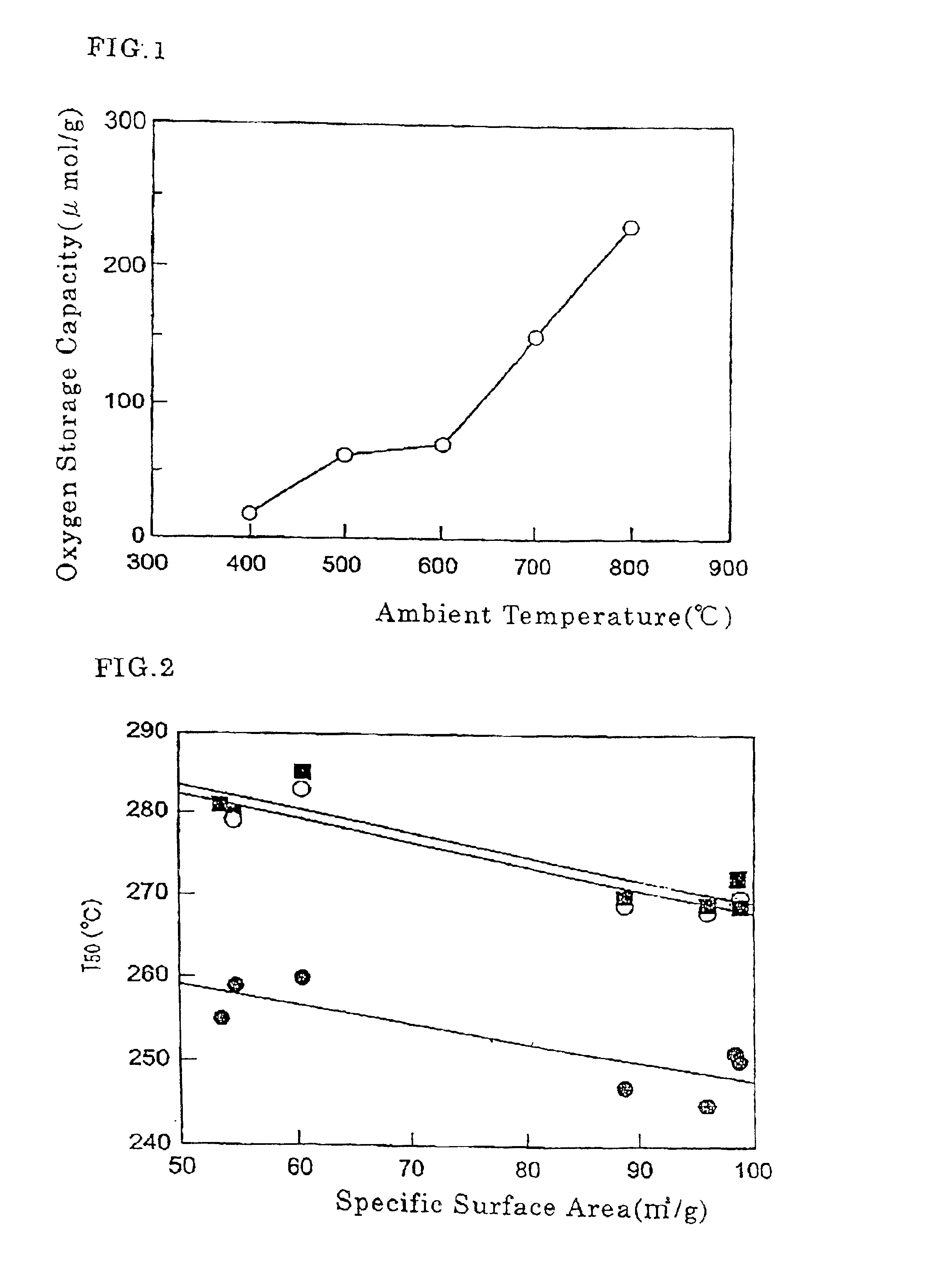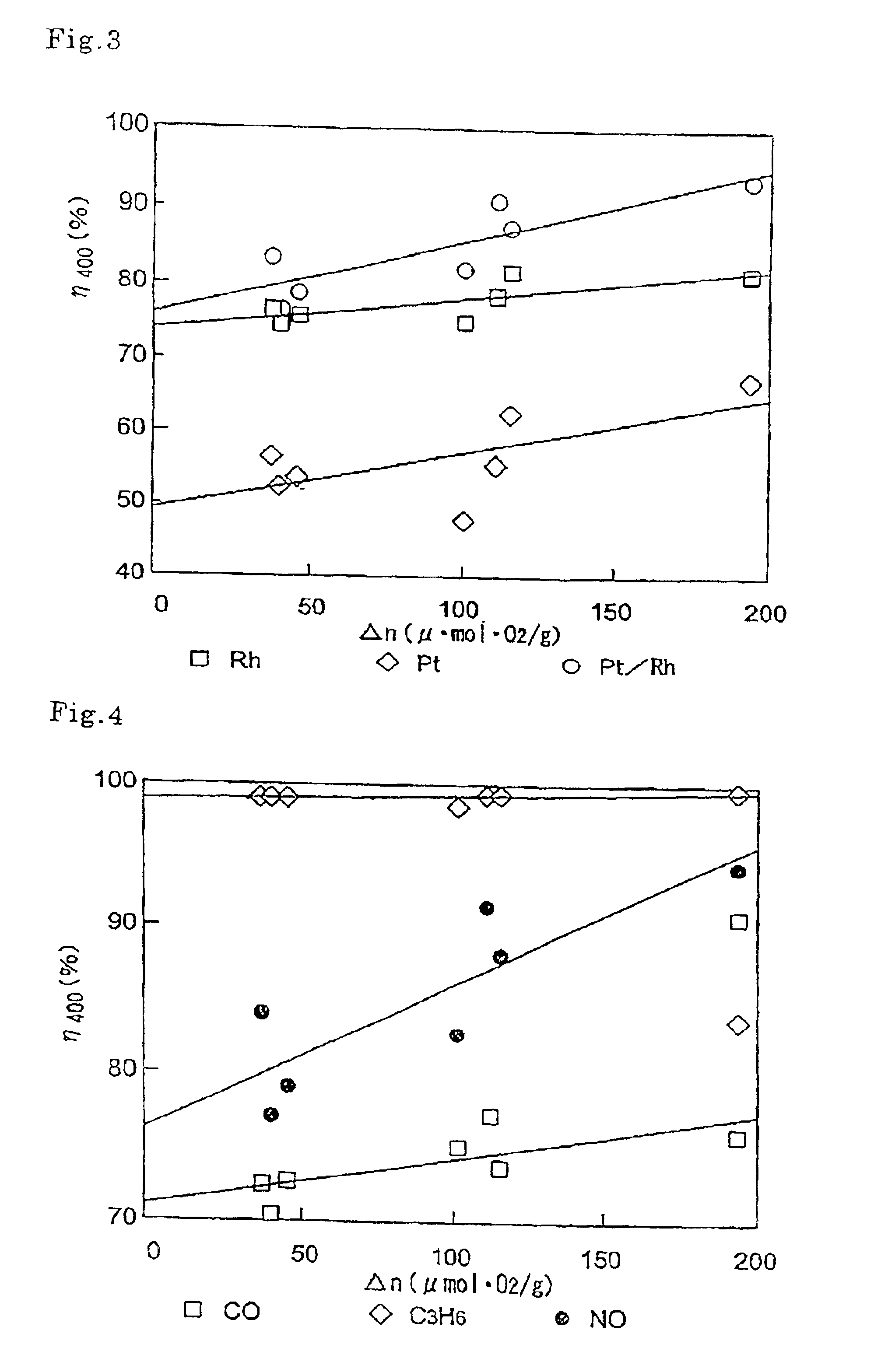Co-catalyst for purifying exhaust gas
a technology of co-catalysts and exhaust gas, which is applied in the direction of physical/chemical process catalysts, other chemical processes, separation processes, etc., can solve the problems that the sintering of cerium oxide itself cannot be prevented, and achieve the effects of increasing the oxygen storage capacity of cerium, reducing temperature, and reducing heat resistan
- Summary
- Abstract
- Description
- Claims
- Application Information
AI Technical Summary
Benefits of technology
Problems solved by technology
Method used
Image
Examples
example 1
After cerium nitrate (50 g when converted into CeO.sub.2) and zirconium nitrate (50 g when converted into ZrO.sub.2) were dissolved into water of which a total amount was 3 liters, 50 g of .gamma.-alumina (specific surface area: 150 m.sup.2 / g, average particle size: 18 .mu.m) was put into 3 liters of the aqueous solution and was sufficiently dispersed and mixed. The dispersion was added dropwise to 3 liters of an aqueous solution dissolving 150 g of ammonium bicarbonate under stirring for reaction. The reaction provided the alumina coated with the reaction product containing the cerium and the zirconium.
After the sufficient washing of the product followed by the filtration, the product was dried at 100.degree. C. and further sintered at 600.degree. C. for three hours to provide the alumina powder supporting the composite oxide containing the cerium and the zirconium.
The composition rate of the alumina supporting the composite oxide (weight ratio converted into corresponding oxides)...
example 2
Alumina powder supporting a composite oxide containing cerium and lanthanum was prepared in accordance with the same conditions as those of Example 1 except that lanthanum nitrate (10 g when converted into La.sub.2 O.sub.2) was used in place of the zirconium nitrate of Example 1. A composition rate, an average particle size and a specific surface area measured similarly to Example 1 were shown in Table 1.
Total discharge amounts of polluted substances in an exhaust gas were measured similarly to Example 1. The results were shown in Table 2.
example 3
After cerium nitrate (50 g when converted into CeO.sub.2) and zirconium nitrate (50 g when converted into ZrO.sub.2) were dissolved into water of which a total amount was 0.5 liter, 50 g of .gamma.-alumina (specific surface area: 150 m.sup.2 / g, average particle size: 18 .mu.m) was put into 0.5 liter of the aqueous solution and was sufficiently dispersed and mixed. The dispersion was filtered to recover the powder which was immediately added dropwise to 3 liters of an aqueous solution dissolving 150 g of ammonium bicarbonate under stirring for reaction. The reaction provided the alumina coated with the reaction product containing the cerium and the zirconium.
Alumina powder supporting a composite oxide containing cerium and lanthanum was prepared by a treatment similar to that of Example 1.
A composition rate, an average particle size and a specific surface area measured similarly to Example 1 were shown in Table 1.
PUM
| Property | Measurement | Unit |
|---|---|---|
| Temperature | aaaaa | aaaaa |
| Angle | aaaaa | aaaaa |
| Angle | aaaaa | aaaaa |
Abstract
Description
Claims
Application Information
 Login to View More
Login to View More - R&D
- Intellectual Property
- Life Sciences
- Materials
- Tech Scout
- Unparalleled Data Quality
- Higher Quality Content
- 60% Fewer Hallucinations
Browse by: Latest US Patents, China's latest patents, Technical Efficacy Thesaurus, Application Domain, Technology Topic, Popular Technical Reports.
© 2025 PatSnap. All rights reserved.Legal|Privacy policy|Modern Slavery Act Transparency Statement|Sitemap|About US| Contact US: help@patsnap.com



